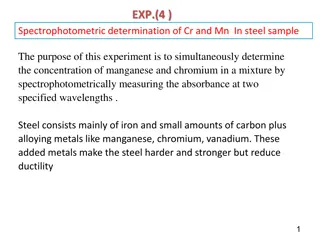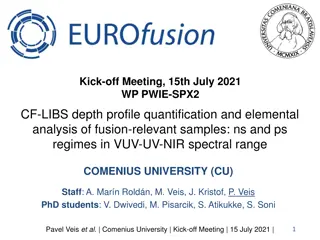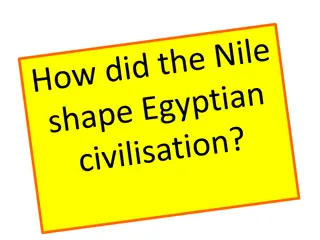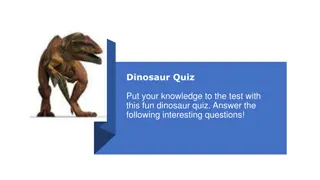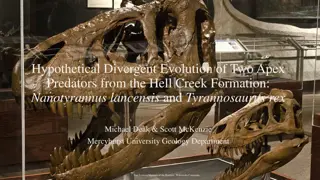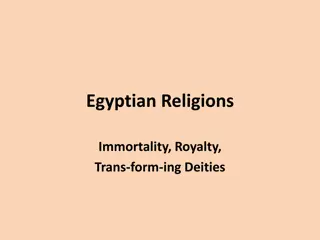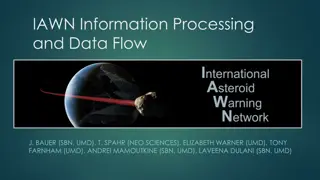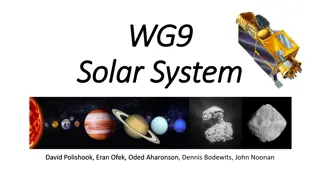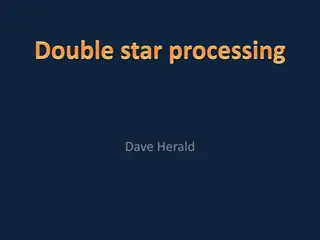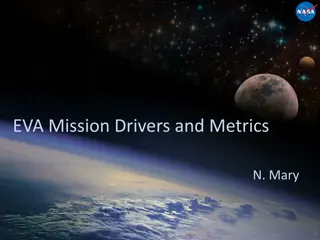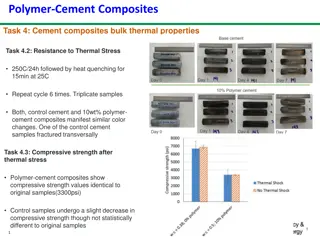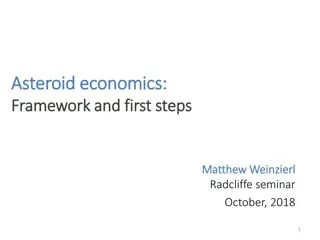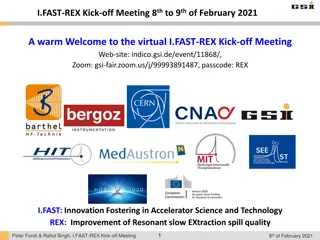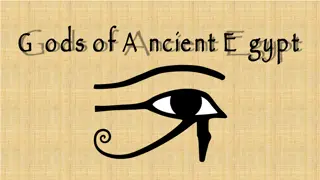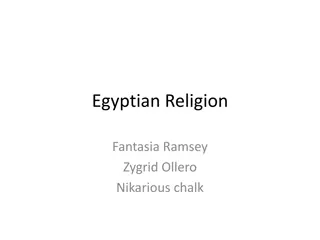Exploring OSIRIS-REx: A Mission to Collect Asteroid Samples
"Discover the OSIRIS-REx mission by NASA, aiming to collect samples from asteroid 1999 RQ36 for analysis on Earth. Meet the mentors, interns involved, explore mission objectives, spacecraft details, and the significance of potential results for deep space exploration and understanding the Solar System's origins."
Download Presentation

Please find below an Image/Link to download the presentation.
The content on the website is provided AS IS for your information and personal use only. It may not be sold, licensed, or shared on other websites without obtaining consent from the author. Download presentation by click this link. If you encounter any issues during the download, it is possible that the publisher has removed the file from their server.
E N D
Presentation Transcript
OSIRIS-REx Asteroid Sample Return (NASA New Frontiers Program) Mentors: Christopher Shinohara and Anthony Ferro Interns: Ina Kundu and Amanda Duron Arizona Space Grant Consortium, University of Arizona, Tucson April 21st, 2012
Overview What is OSIRIS-REx? The Mission Current Status Next Steps Systems Information http://chrisastro.webnode.com/news/another-week-of-space-related-events-from-around-the-world- and-in-orbit-/
What is OSIRIS-REx? Origins, Spectral Interpretation, Resource Identification, and Security Regolith Explorer (OSIRIS-REx) A planetary science mission Part of NASA s New Frontier Programhttp://www.universetoday.com/85953/nasa-selects-osiris-rex-as-first-us-asteroid-sampling-mission/
The Mission 14-year mission: May 2011 through 2025 Spacecraft scheduled to launch on September 20, 2016 Travel to asteroid will take 3 years Surface of asteroid will be mapped for 6 months Sample returns to Earth for analysis in 2023 http://news.nationalgeographic.com/news/2010/08/100806-science-space-asteroid-impact- earth-osiris-rq36/
Objectives Collect the first U.S. asteroid samples Map the surface of asteroid 1999 RQ36 Examine its composition Explore its regolith Observe its orbit Return samples to Earth
Asteroid 1999 RQ36 http://osiris-rex.lpl.arizona.edu/faq.html#faq5
Asteroid 1999 RQ36 http://osiris-rex.lpl.arizona.edu/faq.html#faq5
Spacecraft http://osiris-rex.lpl.arizona.edu/images/osirisrex.jpg
Instruments http://osiris-rex.lpl.arizona.edu/sp_instruments.html
Significance of Results Deep space exploration Birth of the Solar System Planet formation Origins of life Orbits of asteroid
Current Status In March 2012, scientists discussed the details of the mission s operations Currently in Phase B of the mission At the end of March, System Definition Reviews (SDRs) began, continuing throughout April http://www.offthewallproject.org/2011/05/30/current- status-of-the-otwp-53011/
Current Status SDR for each Instrument Instrument SDRs lead to Mission Definition Review (MDR) in May http://i.istockimg.com/file_thumbview_ approve/17963123/2/stock-photo- 17963123-may-2012-calendar.jpg SDRs are critical for NASA s Systems Engineering Process to ensure the mission is a success They are one of the key checkpoints during Formulation http://en.wikipedia.org/wiki/File:Checkmark.png
Next Steps Finalize for Preliminary Design Review (PDR) in March 2013 After the transition to Implementation, designs are finalized and spacecraft assembly begins for final launch in 2016 http://www.cankler.com.au/2011/12/14/nasa-osiris-rex/
Importance of MS Project Master Schedule maintained by Sr. Planning Specialist to merge the schedules for different systems Track milestones to ensure mission is going as scheduled (Milestone Chart) Rolling Wave Phenomenon Observed http://en.wikipedia.org/wiki/Gantt_chart
Systems Information System administration Networks Maintenance Visualization http://osiris-rex.lpl.arizona.edu/images/news2.png
Systems Information Security provisions Telecommunications systems Software (Control of Spacecraft) Analysis of data
Summary Characterize asteroid 1999 RQ36 Return and analyze pristine samples Compare to data of entire asteroid population
A Special Thank You To The Lunar and Planetary Department The University of Arizona The team at Michael Drake Building Arizona Space Grant Consortium Mr. James Rogers and Mr. Zachary Dolch And of course our mentors!




